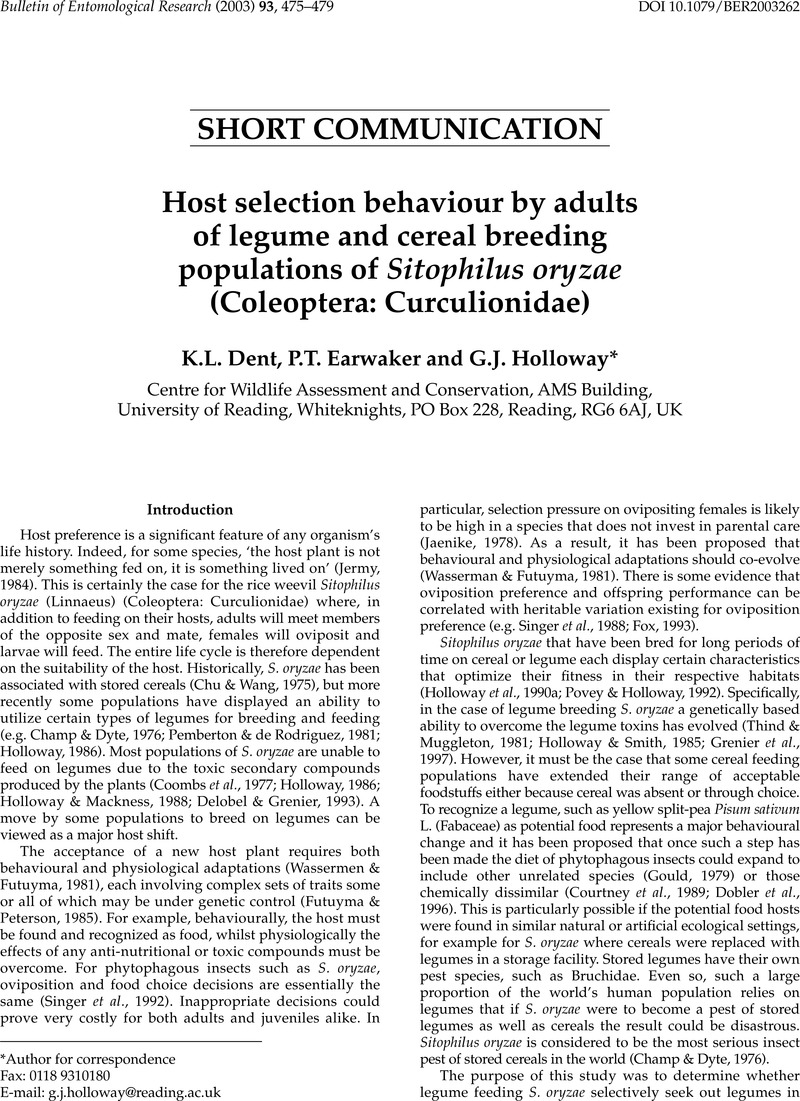Crossref Citations
This article has been cited by the following publications. This list is generated based on data provided by Crossref.
Mulungu, L.S.
Jilala, M.R.
Mwatawala, M.W.
and
Mwalilino, J.K.
2011.
Assessment of Damage due to Larger Grain Borer (Prostephanus truncatus Horn) on Stored Paddy Rice (Oryza sativa L. Poaceae).
Journal of Entomology,
Vol. 8,
Issue. 3,
p.
295.
Egbon, I.N.
Ayertey, J.N.
and
Eziah, V.Y.
2012.
Relative Susceptibility of 13 Cowpea (Vigna unguiculata) Varieties and Some Cereal Grains to Attack bySitophilus oryzae(Coleoptera: Curculionidae).
African Entomology,
Vol. 20,
Issue. 2,
p.
343.
Egbon, I.N.
and
Ayertey, J.N.
2013.
Incidence of Sitophilus oryzae and Other Stored-product Pests on Cowpea in Local Markets in Accra: Management Strategies Employed by Retailers.
Pakistan Journal of Biological Sciences,
Vol. 16,
Issue. 9,
p.
435.
Trematerra, Pasquale
Lupi, Claudio
and
Athanassiou, Christos
2013.
Does natal habitat preference modulate cereal kernel preferences in the rice weevil?.
Arthropod-Plant Interactions,
Vol. 7,
Issue. 3,
p.
287.
Kirsch, Roy
Heckel, David G.
and
Pauchet, Yannick
2016.
How the rice weevil breaks down the pectin network: Enzymatic synergism and sub-functionalization.
Insect Biochemistry and Molecular Biology,
Vol. 71,
Issue. ,
p.
72.



